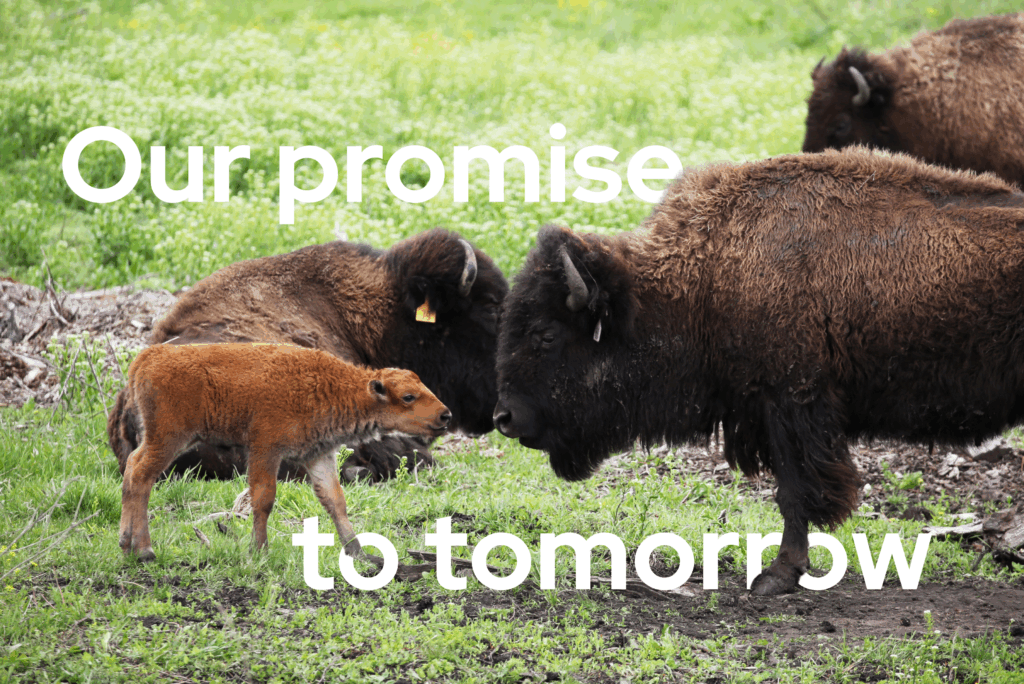Home / Openlands Programs / Lands in Harmony® / Add Attractive Native Plants
Share
Home / Openlands Programs / Lands in Harmony® / Add Attractive Native Plants
Share
In Lake County? Schedule and appointment with our Lands In Harmony program to meet our landscape ecologist and incorporate conservation-friendly practices into your landscape.
Native Plants are Key to This Region
By planting a native tree, bush, fern, or other plant, you can support your local ecosystem and preserve the unique biodiversity of this region. For best results, choose species that will be happy with the amount of sunlight, moisture, and space your site offers.
Shopping tip: how to know it's native
Make sure the label has a two-word scientific name. Native hydrangea is Hydrangea arborescens.
Natives don’t have a third word in quotation marks. Hydrangea arborescens ‘Annabelle’ is not native.
Native to where? Colorado? Norway? For trees and shrubs, use this Native Tree & Shrub Guide. For flowers, ferns, and sedges, refer to nursery websites.
How to plant
IF A TREE OR SHRUB, remove the soil or mulch that might be covering the root flare – the wider area of the trunk where the main roots begin to spread out from the trunk.
DIG a hole twice as wide as the plant’s container and no deeper than the distance from the root flare to the bottom of the container.
REMOVE the container. Cut off any roots beginning to encircle the trunk.
PLACE the plant in the hole, making sure the root flare is even with the ground surface.
FILL the soil back in around the plant, pushing it firmly in place to remove air pockets.
MULCH around the plant, about 3 inches deep with no mulch touching the tree or plant.
WATER deeply, saturating the soil around the plant at least one inch deep. For new trees, this can require 15 – 20 gallons. Weekly SOAKING is much better than daily sprinkling.
Defining native
Our native plants are the flowers, trees, and other plants that have been growing in northeastern Illinois for centuries, long before the first Europeans arrived. They evolved here and are key to our ecosystems. The definitive authority of flora that is native to this 22-county ecosystem is Plants of the Chicago Region by Floyd Swink and Gerould Wilhelm. It documents over 1,600 native species, more than any national park.
Why add natives
Many of our songbirds, butterflies, frogs, and other wildlife need native plants to survive – and are declining because so few native plants remain today. They cannot survive solely on the European and Asian plants that cover so much of our suburban and urban landscape. They need plants native to this specific area because of intricate food chain requirements subtly timed to synchronize with each other during pollination, migration, seed dispersal, and other seasonal rhythms. Your natives will help our wildlife and create habitat connections between our remaining natural areas.
Many absorb large amounts of rainwater.
Many are long-lived and easy to grow.
There are many choices and most are rarely found in garden centers. Some are perfect for formal landscaping, and others work best in casual designs.
Though a species might be native to a different part of North America, we focus on supporting those that are native to the 22-county Chicago Region. For instance, there are many species of milkweed, but only 14 are native to our area.
Notes on design & maintenance
There’s no need to rip out your beautiful ginkgoes, tulips, or lilacs. Instead, look for ways to incorporate new trees and other plants into your existing landscape.
Aesthetics are important. Natives can work beautifully in both formal and casual landscapes.
All gardens, native or non-native, require weeding and other maintenance.
Read and follow your municipality’s landscaping requirements.
Trees and shrubs generally have more impact on property value and wildlife habitat than perennial gardens and tend to outlast changes in ownership over time. They also consume less maintenance time than gardens.
Choose trees and other plants that will thrive in the spot you’ve picked out based on their sunlight and moisture preferences.
Is the summer sun beating down on your air conditioner or patio? Consider a shade tree or tall shrubs.
Is there an area where a great deal of water collects or travels through your property? Install plants that absorb a lot of water. These are frequently labeled as good for ‘bio-swales’ or ‘rain gardens’ and can bounce between wet and dry conditions.
Lands in Harmony Information
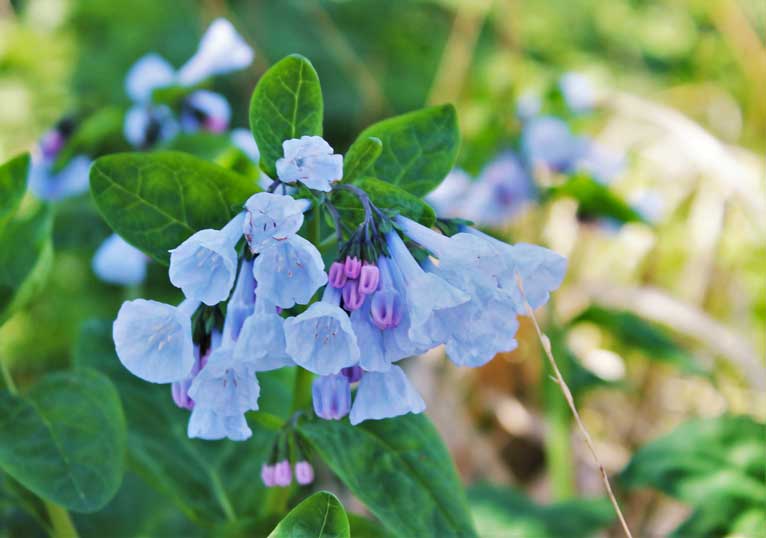
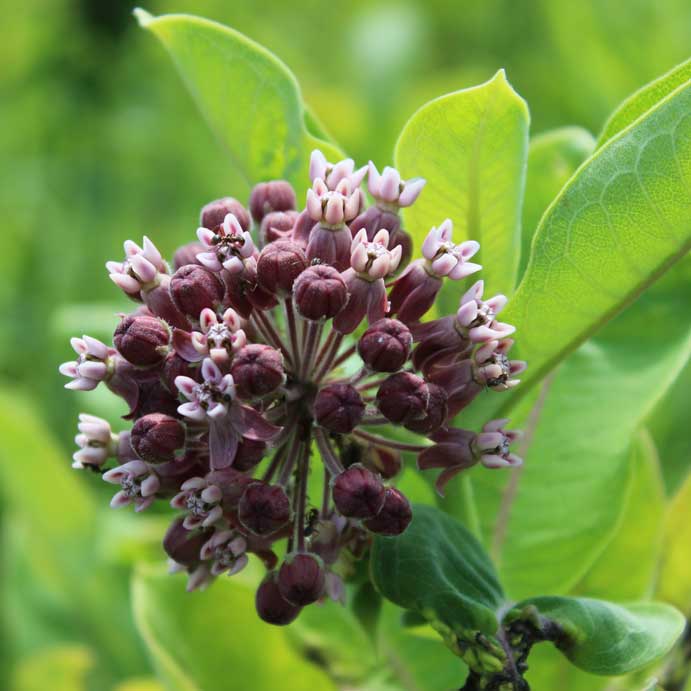
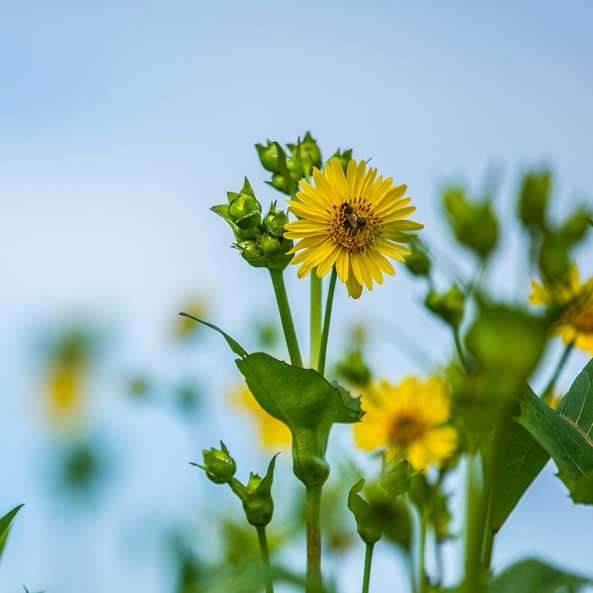
Check out Native Plant Sales – Illinois Native Plant Society and this list of native plant vendors:
Retail Options
Agrecol, Evansville, WI
Blazing Star Nursery, Woodstock, IL
Bombus, Lake Barrington, IL
Country Road Greenhouses, Rochelle, IL
Heritage Flower Farm, Mukwonago, WI
Natural Communities Native Plants, Algonquin, IL
Natives Haven, Harvard, IL
Northwind Perennial Farm, Burlington, WI
Possibility Place, Monee, IL
Prairie Nursery, Westfield, WI
Prairie Moon Nursery, Winona, MN
Wholesale Options
American Native Plants, Woodstock, IL
Bombus, Lake Barrington, IL
Cedar Path Nurseries, Lockport, IL
Fiore Nursery & Landscape Supply, Lake Zurich, IL
Fox Ridge Nursery, Harvard, IL
Glacier Oaks McHenry County Nursery, Harvard, IL
Goodmark Nurseries, Wonder Lake, IL
Kaneville Tree Farms, Kaneville, IL
Kankakee Nursery Co., Aroma Park, IL
King Nursery, Big Rock, IL
Majestic Oaks, Spring Grove, IL
Midwest Groundcovers, St. Charles, IL
Onarga Nursery Co, Onarga, IL
Pizzo Native Plant Nursery, Leland, IL
Possibility Place, Monee, IL
Spence Restoration Nursery, Muncie, IN
Spring Grove Nursery, Mazon, IL
St. Aubin Nurseries, Kirkland, IL
American Native Plants, Woodstock, IL
Johnson’s Nursery, Menomonee Falls, WI
Mariani Plants, Kenosha, WI
McKay Nursery Co, Waterloo, WI
Taylor Creek Nurseries, Brodhead, WI
W & E. Radtke, Inc., Germantown, WI
Blue Grass Farms of Indiana, Anderson, IN
Spence Restoration Nursery, Muncie, IN
Stantec Native Plant Nursery, Walkerton, IN
Woody Warehouse Nursery, Inc., Lizton, IN
Twixwood Nursery, Berrien Springs, MI
Allendan Seed Company, Winterset, IA
Twixwood Nursery, Berrien Springs, MI
Allendan Seed Company, Winterset, IA
Forrest Keeling Nursery, Elsberry, MO
Acorn Farms, Galena, OH
Klyn Nurseries, Perry, OH
Losely Nursery, Perry, OH
Meadowood Enterprises, Madison, OH
Prides Corner Farms, Lebanon, CT
Find a Contractor
In addition to some of the above-listed nurseries, the following offer services in design, planning, and more.
Shopping Tip-How to know it's native
Make sure the label has a two-word scientific name. Native hydrangea is Hydrangea arborescens.
Natives don’t have a third word in quotation marks. Hydrangea arborescens ‘Annabelle’ is not native.
Native to where? Colorado? Norway? For trees and shrubs, use this Native Tree & Shrub Guide. For flowers, ferns, and sedges, refer to nursery websites.
How to Plant
IF A TREE OR SHRUB, remove the soil or mulch that might be covering the root flare – the wider area of the trunk where the main roots begin to spread out from the trunk.
DIG a hole twice as wide as the plant’s container and no deeper than the distance from the root flare to the bottom of the container.
REMOVE the container. Cut off any roots beginning to encircle the trunk.
PLACE the plant in the hole, making sure the root flare is even with the ground surface.
FILL the soil back in around the plant, pushing it firmly in place to remove air pockets.
MULCH around the plant, about 3 inches deep with no mulch touching the tree or plant.
WATER deeply, saturating the soil around the plant at least one inch deep. For new trees, this can require 15 – 20 gallons. Weekly SOAKING is much better than daily sprinkling.
Defining Native
Our native plants are the flowers, trees, and other plants that have been growing in northeastern Illinois for centuries, long before the first Europeans arrived. They evolved here and are key to our ecosystems. The definitive authority of flora that is native to this 22-county ecosystem is Plants of the Chicago Region by Floyd Swink and Gerould Wilhelm. It documents over 1,600 native species, more than any national park.
Why add natives
Many of our songbirds, butterflies, frogs, and other wildlife need native plants to survive – and are declining because so few native plants remain today. They cannot survive solely on the European and Asian plants that cover so much of our suburban and urban landscape. They need plants native to this specific area because of intricate food chain requirements subtly timed to synchronize with each other during pollination, migration, seed dispersal, and other seasonal rhythms. Your natives will help our wildlife and create habitat connections between our remaining natural areas.
Many absorb large amounts of rainwater.
Many are long-lived and easy to grow.
There are many choices and most are rarely found in garden centers. Some are perfect for formal landscaping, and others work best in casual designs.
Though a species might be native to a different part of North America, we focus on supporting those that are native to the 22-county Chicago Region. For instance, there are many species of milkweed, but only 14 are native to our area.
Notes on design & maintenance
There’s no need to rip out your beautiful ginkgoes, tulips, or lilacs. Instead, look for ways to incorporate new trees and other plants into your existing landscape.
Aesthetics are important. Natives can work beautifully in both formal and casual landscapes.
All gardens, native or non-native, require weeding and other maintenance.
Read and follow your municipality’s landscaping requirements.
Trees and shrubs generally have more impact on property value and wildlife habitat than perennial gardens and tend to outlast changes in ownership over time. They also consume less maintenance time than gardens.
Choose trees and other plants that will thrive in the spot you’ve picked out based on their sunlight and moisture preferences.
Is the summer sun beating down on your air conditioner or patio? Consider a shade tree or tall shrubs.
Is there an area where a great deal of water collects or travels through your property? Install plants that absorb a lot of water. These are frequently labeled as good for ‘bio-swales’ or ‘rain gardens’ and can bounce between wet and dry conditions.
For a More Formal Look
- Symmetry and rows create order and balance.
- A large quantity of one to three species creates an impressive impact. For instance, a hedge of black haw viburnum is stunning, as is a garden of graceful sedge, wild geranium, and maidenhair fern.
- Select short plants.
- Use well-edged borders.
- A touch of hardscaping does wonders: garden walls, benches, walkways, arbors, lighting, or artwork.
How to Plant
- SOAK the plant in its container thoroughly before planting. A quick tip is to plunge the container into a bucket of water and wait for all the bubbles to stop, which happens when the soil is saturated.
- DIG a hole big enough for the plant – use the container as a measure.
- REMOVE the plant from its container and carefully break up the lower roots, to encourage new root growth.
- PLACE the plant in the hole, making sure that it sits at the existing ground level, neither too high nor low.
- FILL the soil back in around the plant, taking care to push it firmly back in place and not leave air pockets.
- WATER deeply, and saturate the soil around the plant. At least 1″ of water, 2″ if the soil is dry, to begin with.
- Wait several days before watering again – always water DEEPLY.
- Check the soil regularly and WATER when it feels dry.
- Watch how the plants are growing (wilting can come from over-watering, too, because the roots rot). Periodic SOAKING is much better than sprinkling water daily.
Where to Shop for Native Plants
Native plants are rarely available in garden centers. May is the easiest month to find them, as some conservation organizations such as Openlands offer native plant sales then.
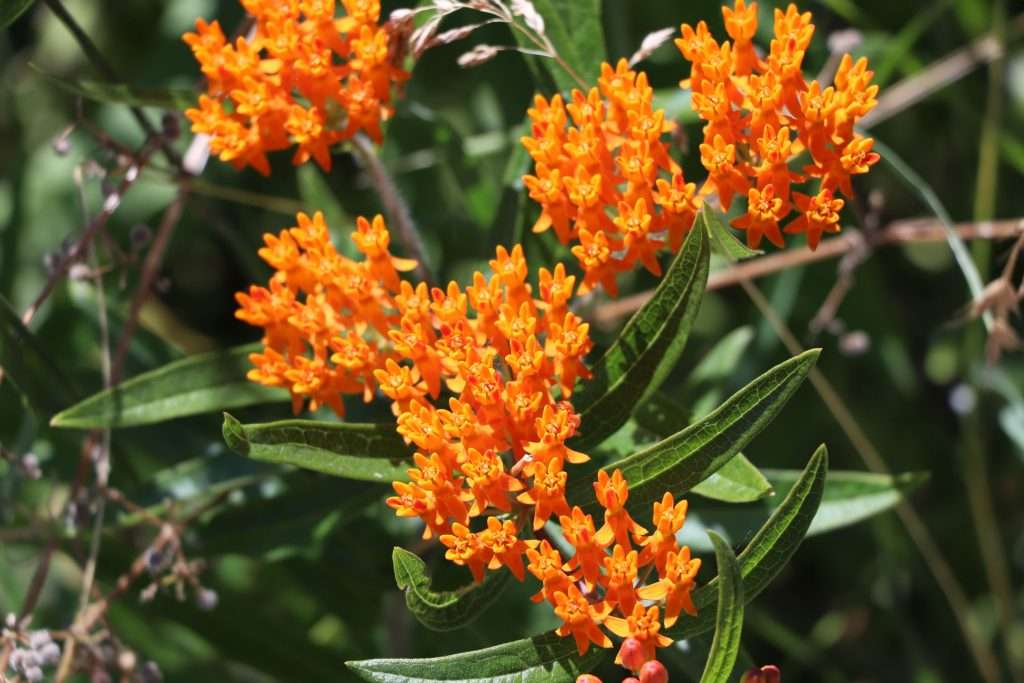
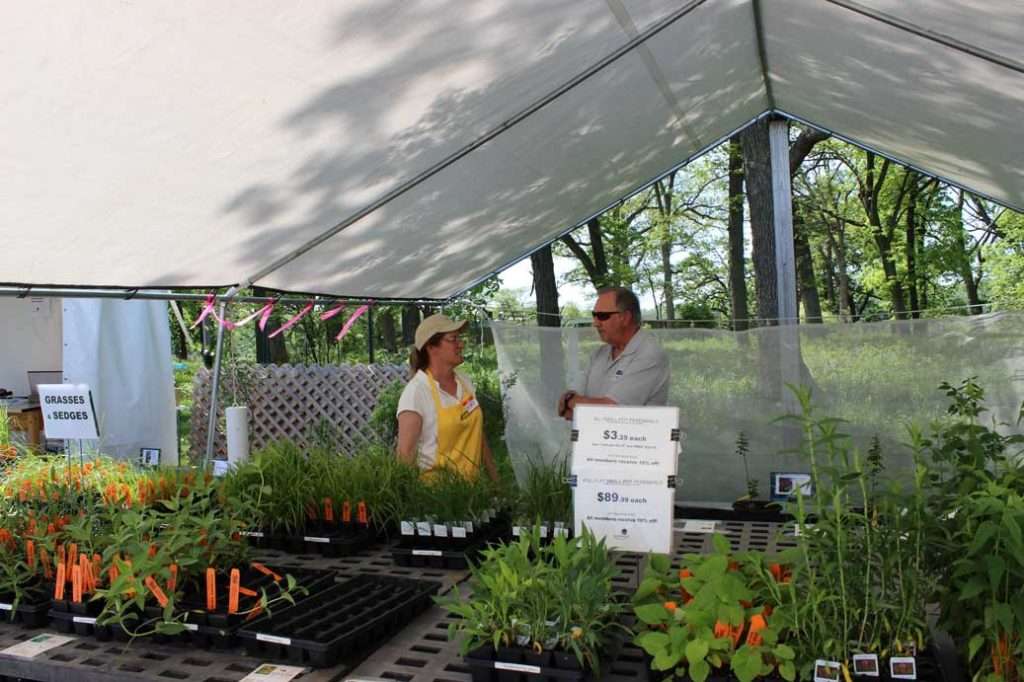
Our local flora is inventoried in the authoritative books Plants of the Chicago Region by Floyd Swink and Gerould Wilhelm, and Flora of the Chicago Region by Gerould Wilhelm and Laura Rericha. You can also find where a plant is native range is by going to the USDA Natural Resources Conservation Service’s PLANTS database.



